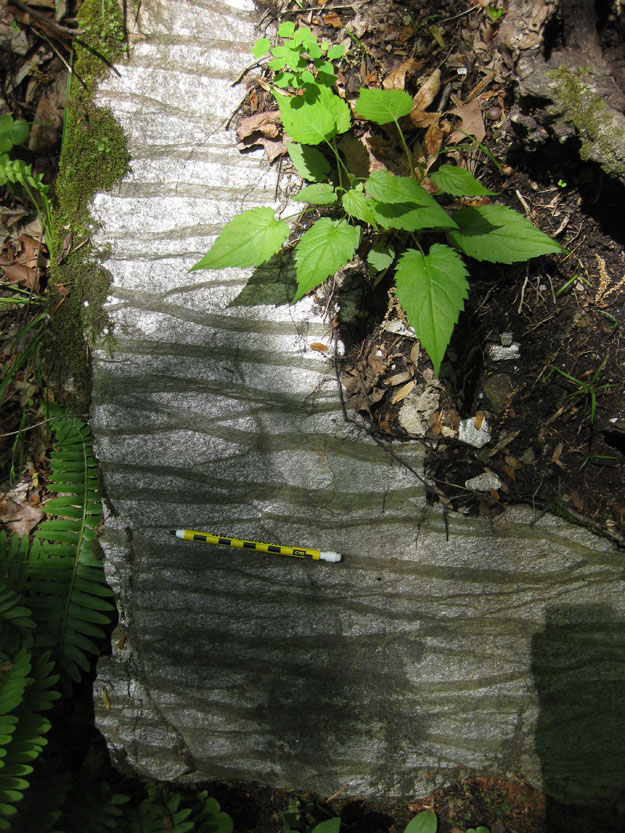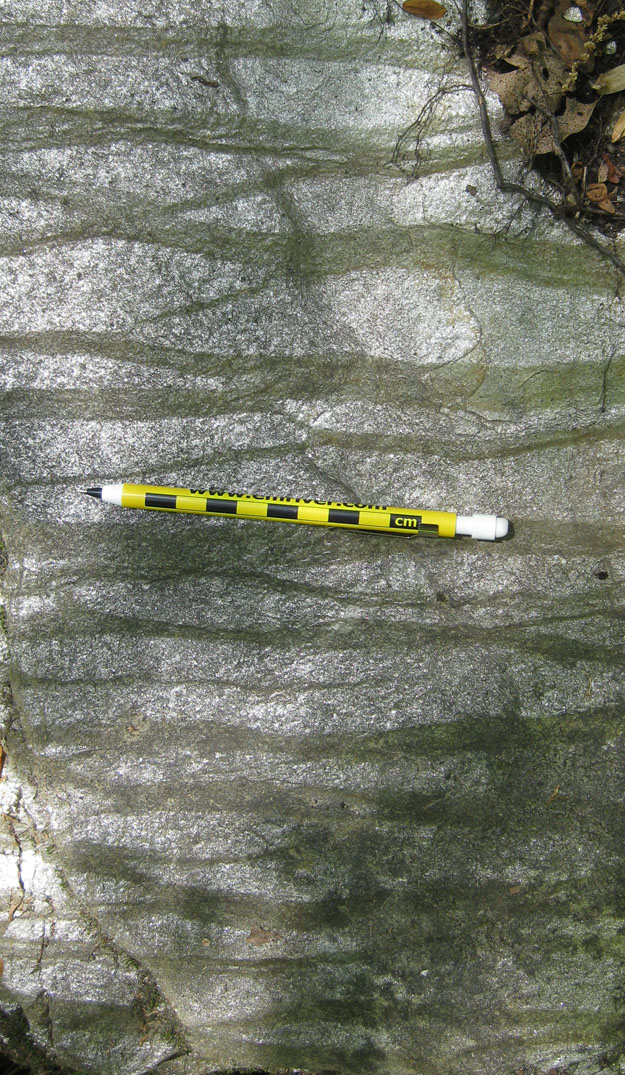13 May 2011
Friday fold(s): More kinky phyllite, but this time from the field
Posted by Callan Bentley
Last week, the Friday fold featured a kinked phyllite of unknown provenance that is currently resident in David King Hall 2074 on the campus of George Mason University. However, on Tuesday of last week, I found another kinked phyllite, this one out in the real world, at Thoroughfare Gap, in the Harpers Formation of the Bull Run Mountains.



So, a couple things to note: this phyllite is verging on schist, just as Justin Bieber is verging on puberty. Second, the dark stripes that you see oriented laterally in these photos are the kink bands; they are made of the exact same stuff as the shiny stuff — it’s just in a different orientation, so it’s not in a position to reflect as much light at the camera lens. Third, note that the rock’s foliation comes in only two orientations: either “shiny” or “tilted down” — it’s a very regular pattern, like this if you looked at it from the side:

In a foliated rock with a well-developed mechanical anisotropy, compressed perfectly parallel to the foliation plane, these kinks will form in a conjugate pair of orientations, each at the same angle relative to the maximum compressional stress. But here, we see only one angle, and its conjugate twin is missing. This implies that the angle between the maximum stress and the foliation was oblique to some degree, with the foliation plane itself accommodating the strain in one orientation (slip along the foliation plane), and then kinking only occurring in the other orientation.
See this study that modeled kink banding with a computer simulation to learn more about kink banding.


 Callan Bentley is Associate Professor of Geology at Piedmont Virginia Community College in Charlottesville, Virginia. He is a Fellow of the Geological Society of America. For his work on this blog, the National Association of Geoscience Teachers recognized him with the James Shea Award. He has also won the Outstanding Faculty Award from the State Council on Higher Education in Virginia, and the Biggs Award for Excellence in Geoscience Teaching from the Geoscience Education Division of the Geological Society of America. In previous years, Callan served as a contributing editor at EARTH magazine, President of the Geological Society of Washington and President the Geo2YC division of NAGT.
Callan Bentley is Associate Professor of Geology at Piedmont Virginia Community College in Charlottesville, Virginia. He is a Fellow of the Geological Society of America. For his work on this blog, the National Association of Geoscience Teachers recognized him with the James Shea Award. He has also won the Outstanding Faculty Award from the State Council on Higher Education in Virginia, and the Biggs Award for Excellence in Geoscience Teaching from the Geoscience Education Division of the Geological Society of America. In previous years, Callan served as a contributing editor at EARTH magazine, President of the Geological Society of Washington and President the Geo2YC division of NAGT.
“just as Justin Bieber is verging on puberty”
XDXDXD